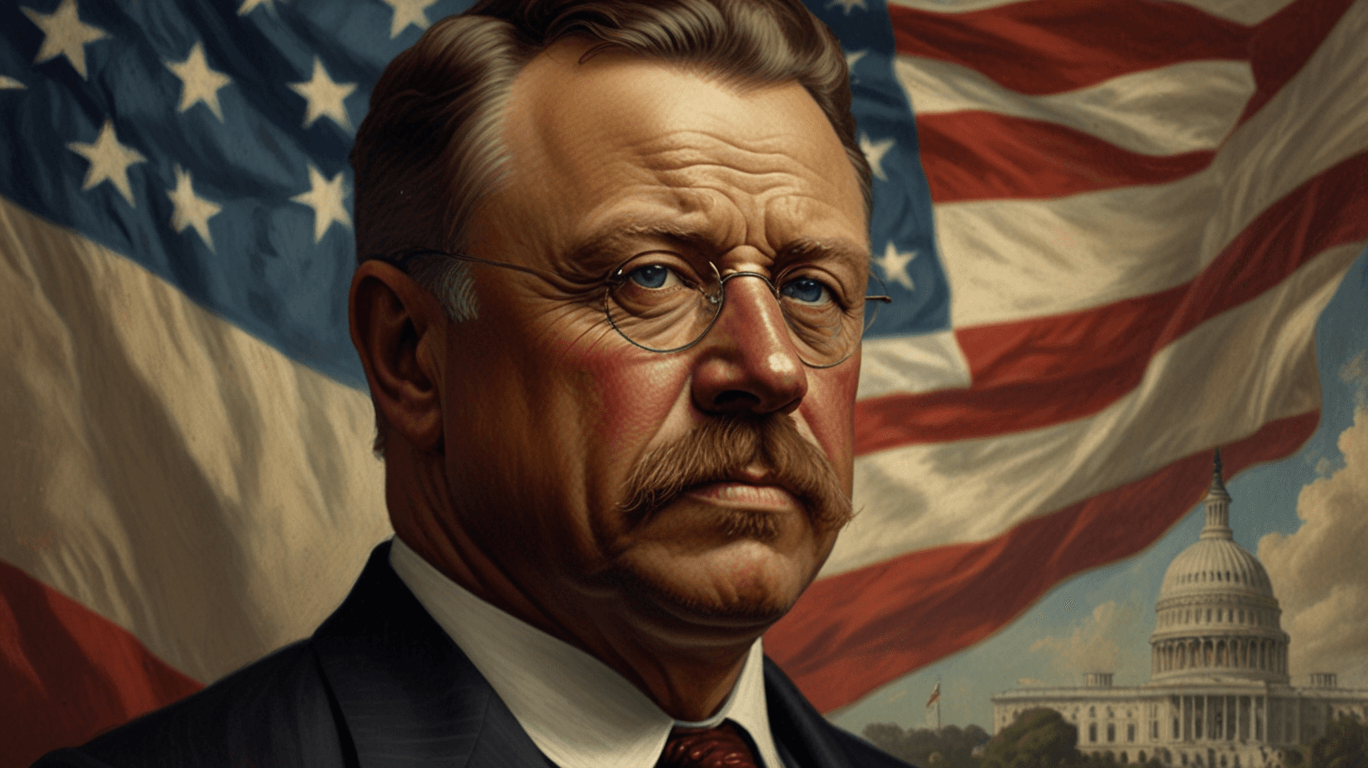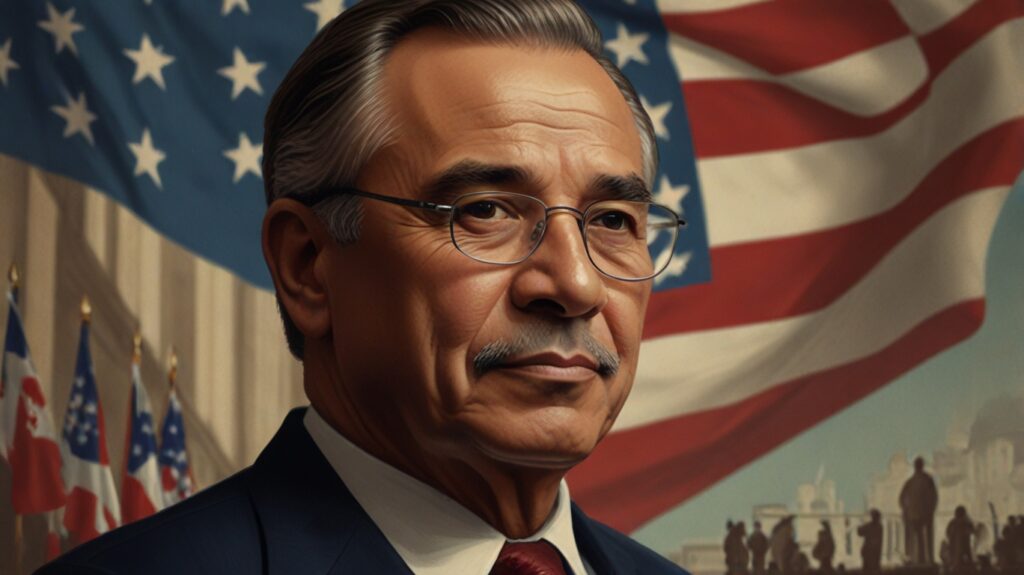The concept of “speak softly and carry a big stick” stands out in a world where people often shout the loudest. This age-old adage encapsulates the power of time, people, understated strength, century, and strategic action. While many may focus on flashy displays, this principle highlights the effectiveness of quiet confidence backed by significant force. It’s a reminder that true power doesn’t always announce itself loudly but rather speaks volumes through its actions. The juxtaposition of speaking softly and wielding a formidable presence underscores the importance of subtlety and impact in equal measure.
Key Takeaways
Actionable Insight: When navigating diplomatic relations, it can be effective to speak softly while having a strong backup plan or leverage.
Relevance: Understanding the historical context and origin of phrases like “speak softly and carry a big stick” can provide valuable insights into diplomatic strategies and international relations.
Connection to Audience: People interested in politics or history can gain a deeper understanding of how tactics like Theodore Roosevelt’s can impact international affairs by learning from previous diplomatic successes and failures.
Link to Content: The examples of Latin American influence, the Venezuelan affair, and the impact of Roosevelt’s corollary highlight how the “big stick” approach was utilized in historical events to achieve diplomatic goals.
Actionable Insight: Reflecting on the complexities of canal diplomacy, such as seen in the Nicaragua Canal dreams and the building of the Panama Canal, can offer valuable lessons on negotiation, power dynamics, and strategic planning in international projects.
Relevance: The history of canal diplomacy underscores the importance of balancing assertiveness with diplomacy in achieving large-scale infrastructure projects and international agreements.
Unveiling the Phrase
Origin
The phrase “speak softly and carry a big stick” is a proverb that encapsulates the idea of negotiating peacefully while simultaneously being prepared to use force if necessary. Theodore Roosevelt popularized the African proverb from which it originated.
Theodore Roosevelt
Theodore Roosevelt, the 26th President of the United States, adopted the term as a cornerstone of his political approach. He believed in diplomacy but also understood the importance of having a strong military presence to back it up.
Significance in Foreign Policy
Roosevelt’s implementation of the doctrine had a profound impact on shaping his foreign policy. He aimed to deter potential adversaries and protect American interests abroad by demonstrating strength and readiness through military power.
The idea behind this approach was to maintain peace through negotiation and intimidation.
Roosevelt’s strategic use of this phrase allowed him to navigate complex international relations confidently and assertively.
Latin American Influence
Big Stick Application
The “big stick” policy in Latin America demonstrated the U.S. military power to intimidate and coerce countries in the region. President Theodore Roosevelt coined this approach, emphasizing using force to achieve diplomatic objectives.
The U.S. applied the “big stick” primarily to intervene in Latin American affairs, ensuring compliance with its interests. This strategy involved deploying naval forces and troops to exert influence over governments perceived as unstable or unfriendly.
Impact on U.S.-Latin American Relations
The big stick diplomacy significantly impacted U.S. relations with Latin American countries. While it aimed to maintain stability and protect American investments, it often led to resentment and anti-American sentiment in the region.
Latin American nations viewed the U.S.’s military interventions as imperialistic and infringing on their sovereignty. This perception strained diplomatic ties and fueled nationalist movements against foreign interference.
Military Muscle Post-Roosevelt Policies
Following Roosevelt’s policies, subsequent U.S. administrations continued to flex their military muscle in Latin America. From supporting coups to backing pro-American regimes, the U.S. utilized its armed forces to advance political and economic interests in the region.
Military interventions became a common tool for enforcing U.S. hegemony in Latin America, shaping regional dynamics and influencing domestic policies in various countries. The legacy of these actions continues to impact relations between the U.S. and Latin American nations today.
The Venezuelan Affair

Application of Big Stick Diplomacy
The United States exemplified the big stick diplomacy, also known as “speak softly and carry a big stick,” in the Venezuelan Affair. This approach involved displaying both strength and restraint to influence outcomes.
In the case of Venezuela, the U.S. government utilized its military and economic power as a deterrent against any potential threats or challenges to its interests in the region. They aimed to maintain stability and protect their investments by demonstrating readiness to use force if necessary.
Diplomatic Actions by the U.S.
Diplomatic actions taken by the U.S. during the Venezuelan crisis included diplomatic pressure, economic sanctions, and strategic alliances with neighboring countries. These measures were aimed at isolating the Venezuelan government and compelling them to address issues such as human rights violations and political instability.
Through diplomatic channels, the U.S. engaged in negotiations, mediation efforts, and international forums to address the crisis in Venezuela. These actions were part of a broader strategy to exert influence and promote democratic values in the region.
Role of Big Stick Diplomacy
The role of big stick diplomacy in resolving the Venezuelan Affair was significant. Combining dialogue with a credible threat of force, the U.S. sought to compel the Venezuelan government to adhere to international norms and respect democratic principles.
The deployment of a big stick approach helped deter further escalation of conflicts and encouraged peaceful resolutions through diplomatic means. It underscored the importance of balancing assertiveness and diplomacy in addressing complex international crises like the one in Venezuela.
Roosevelt’s Corollary Impact

Significance to Monroe Doctrine
The Roosevelt Corollary was an addition to the Monroe Doctrine, asserting the U.S.’s right to intervene in Latin America. It aimed to prevent European powers from intervening in the Western Hemisphere.
Expanding on the Monroe Doctrine, the Roosevelt Corollary emphasized U.S. authority in the region, positioning it as a protector of Latin American nations. This extension solidified U.S. dominance and influence in Latin America.
U.S. Influence in Latin America
Under the Roosevelt Corollary, the U.S. justified interventions in countries like Cuba, Haiti, and the Dominican Republic. The U.S. expanded its control over these nations through military force or economic pressure.
The Big Stick Diplomacy approach, associated with President Roosevelt, reflected this strategy of projecting power while maintaining a peaceful facade. This tactic allowed the U.S. to exert influence without overt aggression.
Impact on Foreign Policy
The Roosevelt Corollary shaped U.S. foreign policy during Roosevelt’s presidency by promoting interventionism and asserting American dominance in the Western Hemisphere. It set a precedent for future U.S. actions in Latin America.
This policy had both positive and negative consequences for U.S.-Latin American relations. While it aimed to maintain stability and protect American interests, it also led to resentment and anti-American sentiment in some countries.
Canal Diplomacy Unpacked
Roosevelt’s Approach
Roosevelt, known for his “big stick” policy, utilized military strength to bolster diplomatic negotiations. His approach emphasized assertiveness in securing the Panama Canal.
The “big stick” strategy symbolized American power, deterring potential adversaries and strengthening negotiating positions. Roosevelt’s firm stance showcased the importance of military readiness in diplomacy.
Diplomatic Strategies
The U.S. employed a mix of diplomatic finesse and military prowess to navigate complex negotiations for the canal. By blending negotiation skills with military might, they ensured success.
Diplomatic strategies included leveraging alliances and utilizing economic incentives to sway decisions favoring canal construction. This multifaceted approach highlighted the significance of political maneuvering in international affairs.
Military Strength Role
Military strength was crucial in securing canal rights and overseeing construction efforts. The presence of U.S. naval forces underscored the commitment to protecting American interests.
The threat of military intervention was a powerful tool in influencing decisions related to the canal route and administration. The combination of diplomatic tact and military backing solidified America’s position in Canal Diplomacy.
Nicaragua Canal Dreams
Roosevelt’s Vision
Theodore Roosevelt, a visionary leader, envisioned a canal cutting through Nicaragua to connect the Atlantic and Pacific Oceans. His ambition was to enhance global trade efficiency and bolster U.S. naval power.
Roosevelt believed constructing a canal in Nicaragua would significantly reduce shipping distances and costs. He saw it as a strategic move to strengthen America’s influence in the Western Hemisphere.
Challenges Faced
Despite Roosevelt’s grand vision, several challenges impeded the realization of the Nicaragua Canal project. One major obstacle was the formidable terrain of the region.
Nicaragua’s rugged geography posed engineering challenges, including volcanic activity and dense rainforests. These obstacles made construction efforts arduous and costly.
Strategic Importance for U.S.
The potential of a canal in Nicaragua held immense strategic importance for U.S. interests. It would provide a crucial shortcut for naval vessels between the two oceans.
A canal in Nicaragua would offer the United States a significant military advantage by facilitating rapid deployment of naval forces. This strategic location could enhance America’s defense capabilities in times of conflict.
Building the Panama Canal
Construction Process
The building of the Panama Canal was a monumental task undertaken during Theodore Roosevelt’s presidency. The construction involved excavating a path through the narrow isthmus of Panama to connect the Atlantic and Pacific Oceans.
It required digging through dense jungles, navigating treacherous rivers, and overcoming challenging terrain. Engineers had to devise innovative solutions to handle the vast amounts of earth and rock moved during the construction.
Engineering Feats and Challenges
The engineering feats achieved during the construction of the Panama Canal were remarkable. One of the most significant challenges was dealing with the formidable Culebra Cut, where workers had to carve through solid rock to create a passage for ships.
The construction crews constantly battled to control water flow from the surrounding rivers and prevent landslides. Despite these challenges, the canal’s builders persevered and overcame each obstacle with ingenuity and determination.
Geopolitical Significance
Completing the Panama Canal had immense geopolitical significance for global trade and U.S. naval power. It revolutionized maritime transportation by providing a shortcut for ships traveling between the Atlantic and Pacific oceans, saving them thousands of miles in distance.
The canal also bolstered U.S. naval dominance by allowing quicker movement of warships between coasts in times of conflict or peace. Furthermore, it facilitated trade between nations by streamlining shipping routes and reducing transportation costs.

